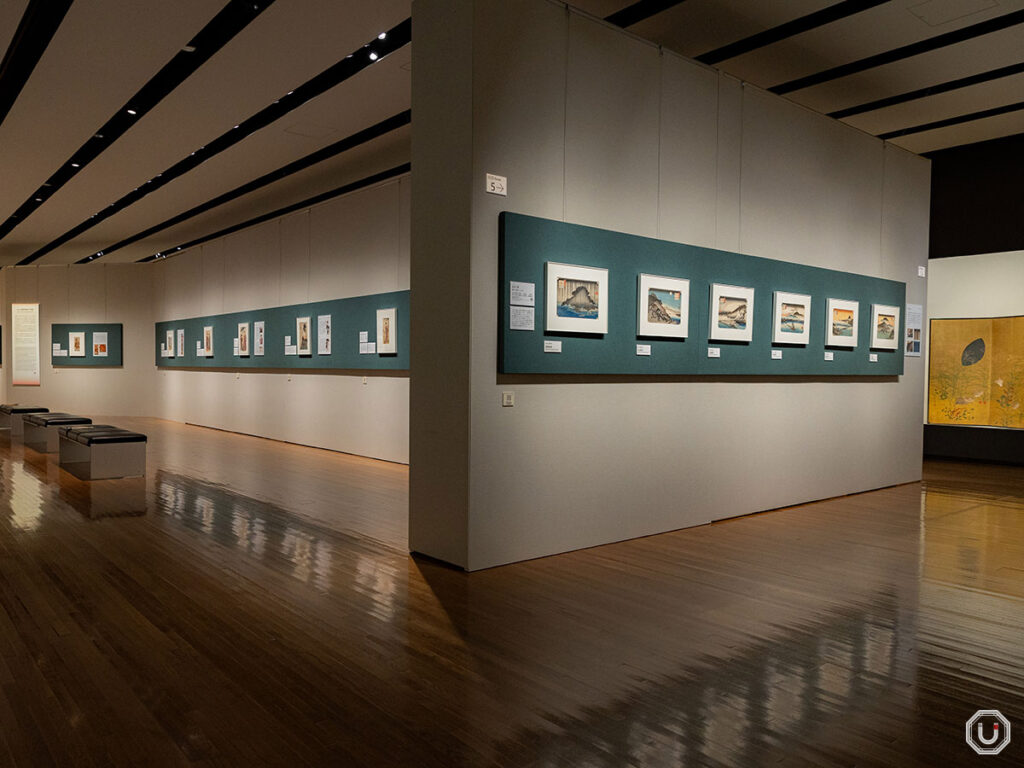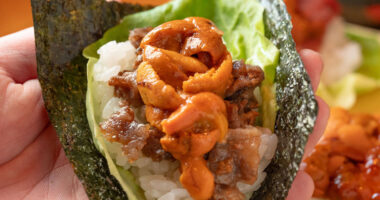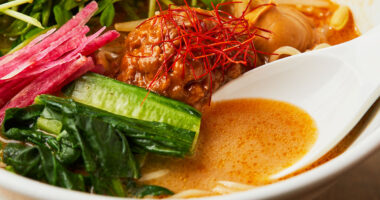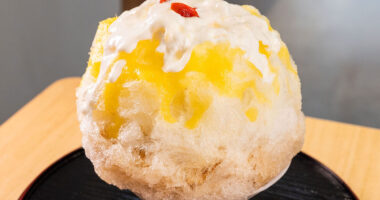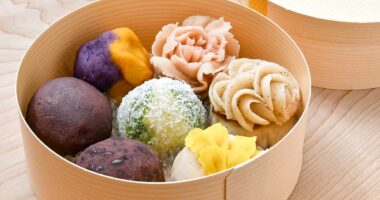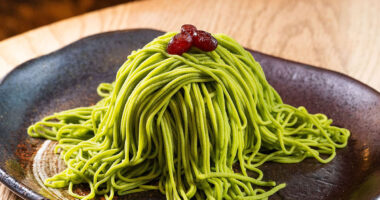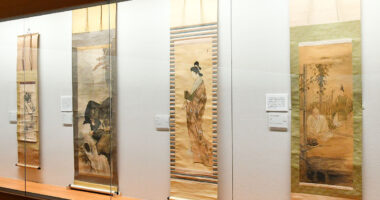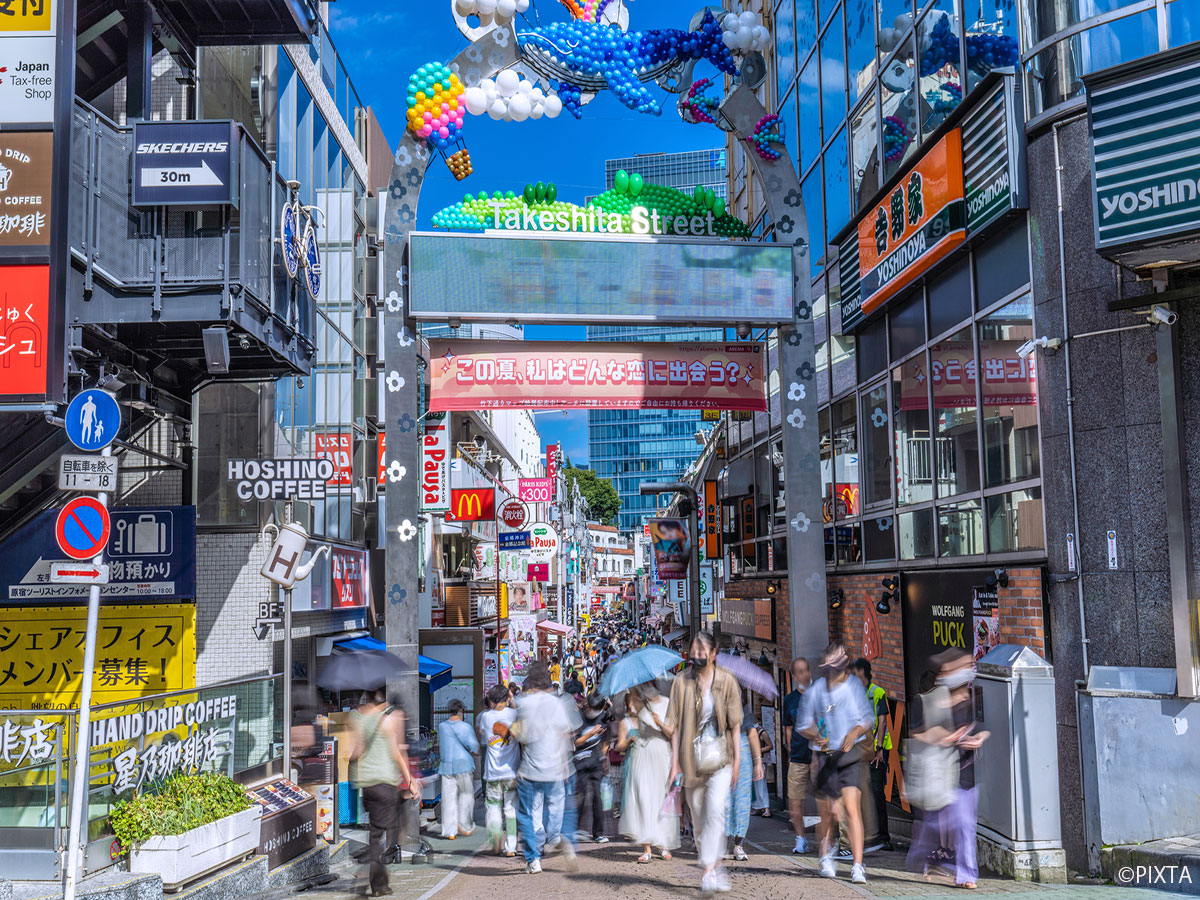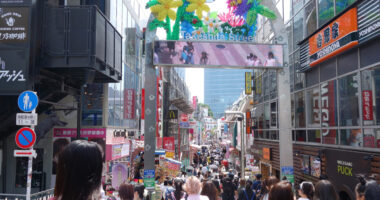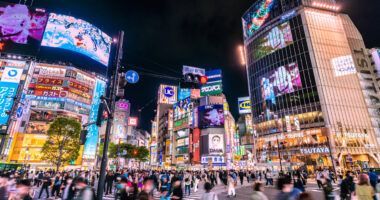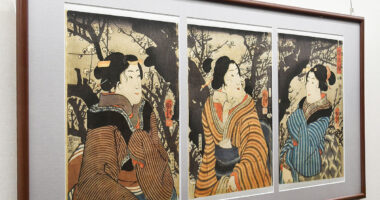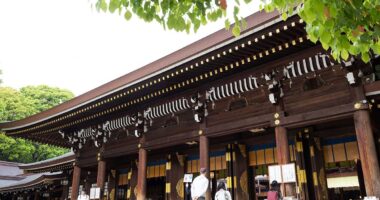Founded in 1966 in the Kabutochō neighborhood of Nihonbashi and centered around the on the personal collection of Taneji Yamazaki, the Yamatane Museum of Art has dedicated itself to collecting and exhibiting high-quality Japanese paintings. Its holdings include approximately 1,800 works, ranging from modern and contemporary nihonga (Japanese paintings) to classic calligraphy, ukiyo-e (traditional Japanese woodblock prints), and Western-style oil paintings.
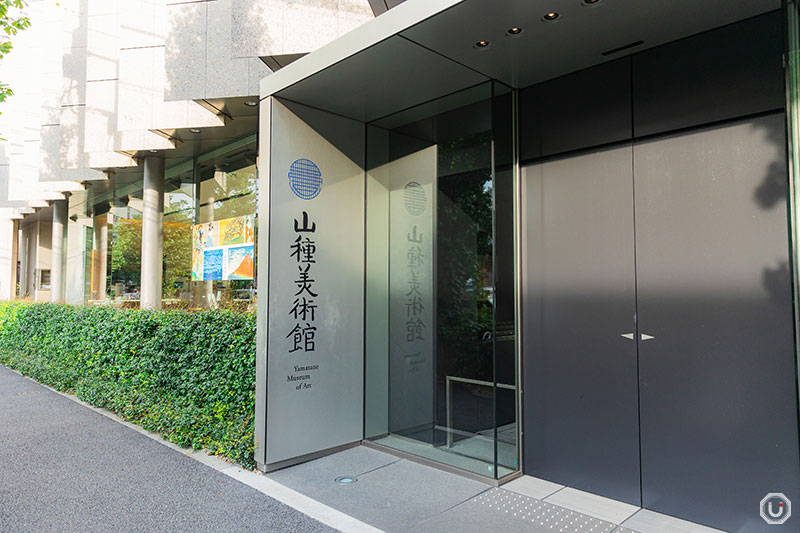
Exterior of the Yamatane Museum of Art
The museum’s diverse collection is gradually showcased through five to six exhibitions each year, allowing visitors to enjoy works selected according to the themes of the moment.
In 2009, it relocated to its current location in Hiroo, Shibuya Ward, nestled in a quiet residential area surrounded by greenery.
It’s about a 10-minute walk from JR Ebisu Station, making it highly accessible—a major appeal of the museum.
Ammonites rest in marble staircases
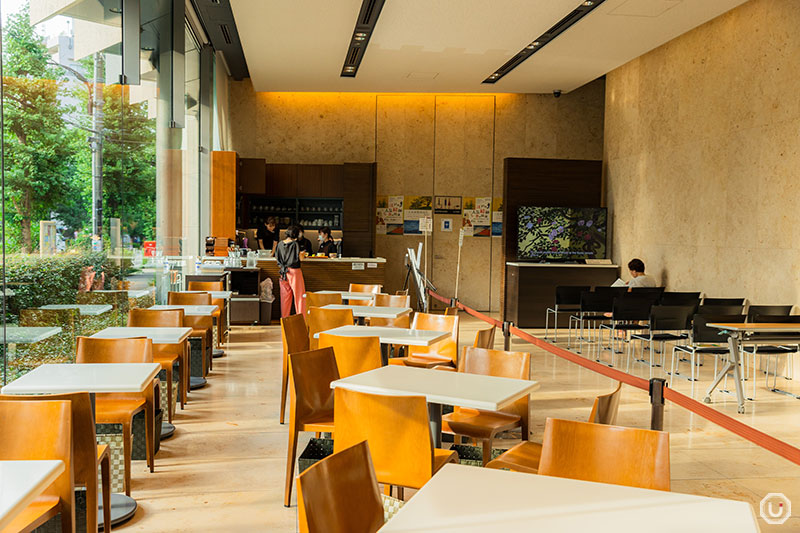
Entrance lobby
As you step inside, you are greeted by the calm and inviting atmosphere of the entrance lobby.
Next to the reception is the museum cafe, “Cafe Tsubaki (‘Cafe Camellia’),” and an information corner—a space designed to gently ease visitors’ first impressions.
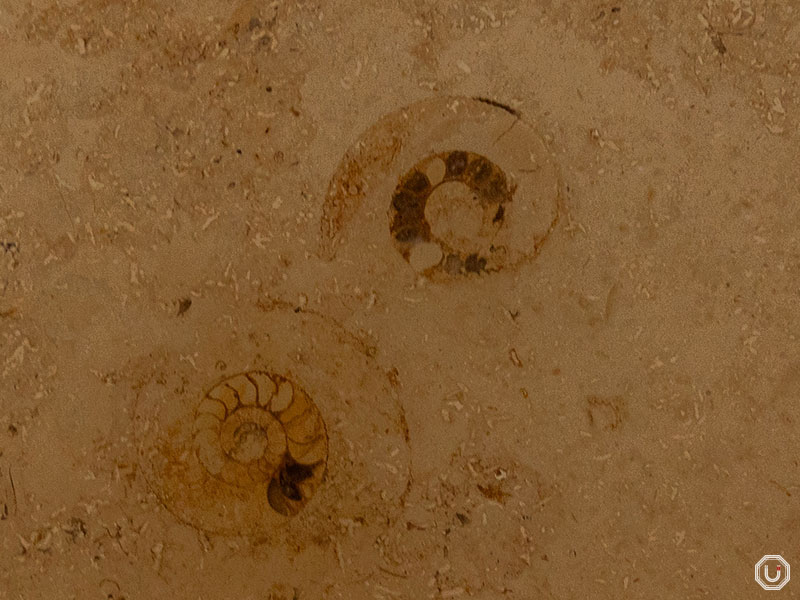
An ammonite fossil on the wall of the Yamatane Museum of Art
To reach the exhibition rooms, head down the staircase behind the reception.
If you look closely at the marble-covered walls, you might quietly spot ammonite fossils resting there.
Within this quiet space, the subtle intersection of past and present creates a memorable impression.
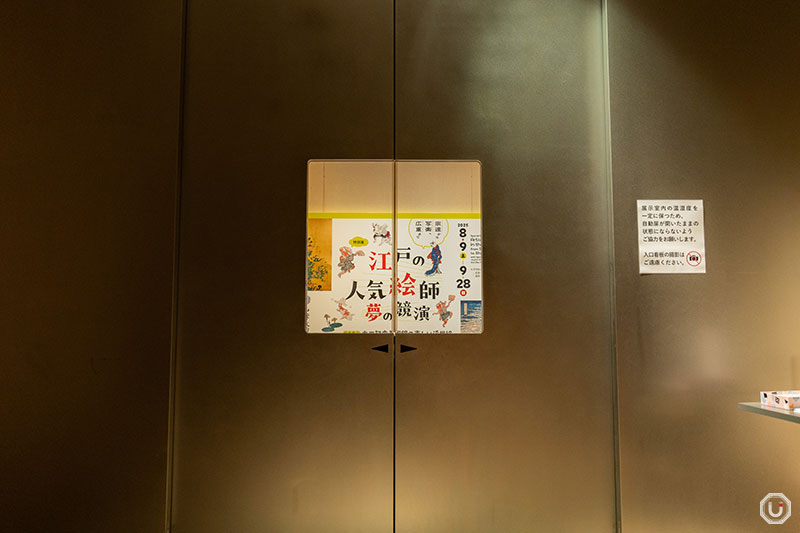
Automatic doors leading to the exhibition rooms, revealed as you descend the stairs
Artists resonating across eras: From Sōtatsu to Sharaku and Hiroshige
The Yamatane Museum of Art does not hold a permanent exhibition.
Instead, multiple special exhibitions are held throughout the year, allowing visitors to experience Japanese art from different perspectives each time.
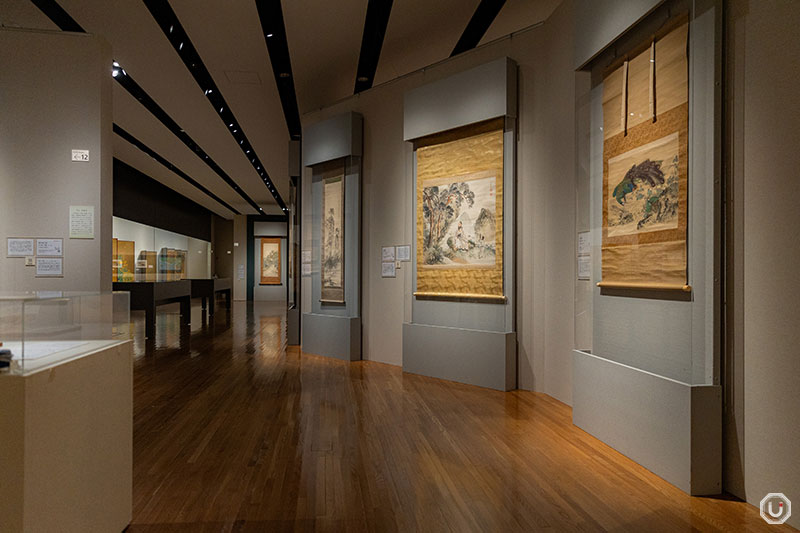
Inside the exhibition room at the Yamatane Museum of Art
On this visit, the exhibition was titled “Artists Popular in the Edo Period, from Sōtatsu to Sharaku and Hiroshige”
From Tawaraya Sōtatsu, the founder of the Rinpa school, to the ukiyo-e master Tōshūsai Sharaku, and finally to Utagawa Hiroshige, masterpieces by artists of different eras and styles were gathered, making it a true dream collaboration.
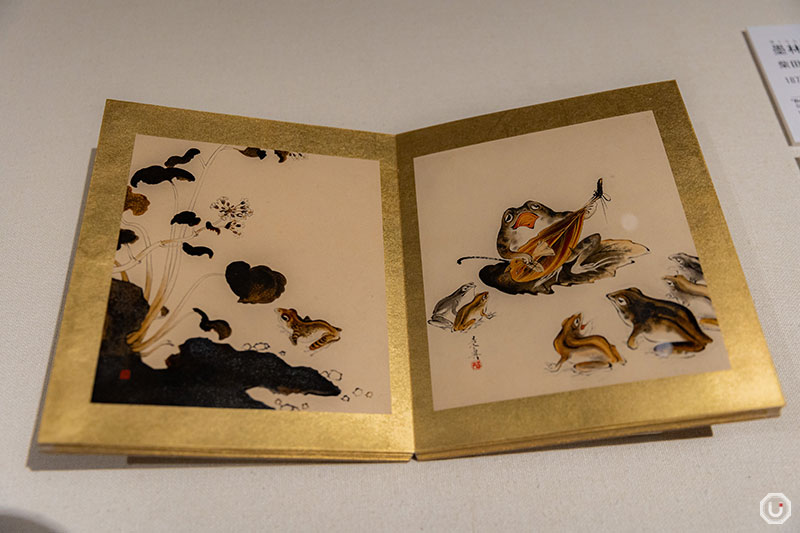
Shibata Zeshin, “Bokurin Hikka” 1877–1888 (Meiji 10-21) from The Yamanate Museum of Art collection
One piece that particularly caught the eye was Shibata Zeshin’s “Bokurin Hikka.”
Created between 1877 and around 1888, this work depicts frogs playing the biwa (Japanese short-necked wooden lute), with their friends listening intently, rendered with a charming yet meticulous brushwork.
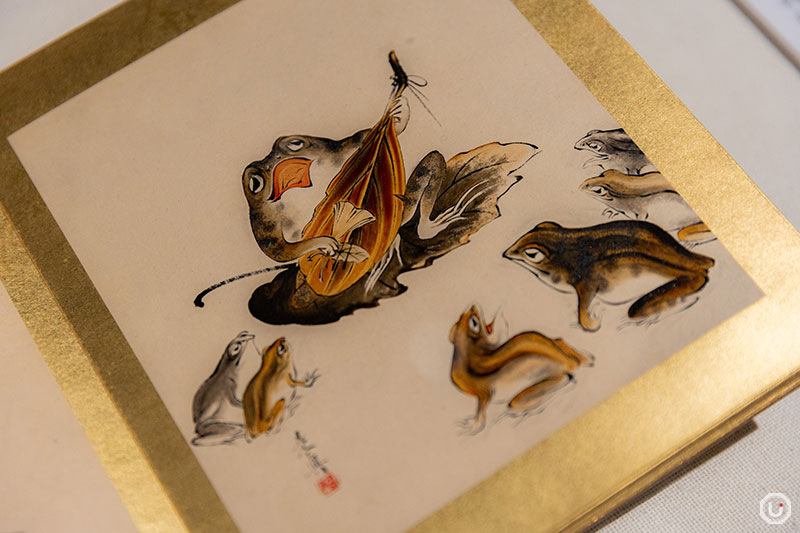
Also notable is the unique texture of the lacquer painting
Shibata Zeshin, born in the Edo period (1603 to 1868), invented a unique technique called urushi-e, painting on wood or paper using urushi-e lacquer.
The urushi-e technique developed by Shibata Zeshin is characterized by the glossy, radiant finish of lacquer, showcasing his exceptional skill as a maki-e artist of the Edo.
Additionally, “Bokurin Hikka” is popular as artwork replicated in museum merchandise and remains a memorable piece for visitors.
Masterpieces of the six great ukiyo-e artists, with easy to understand explanations for beginners
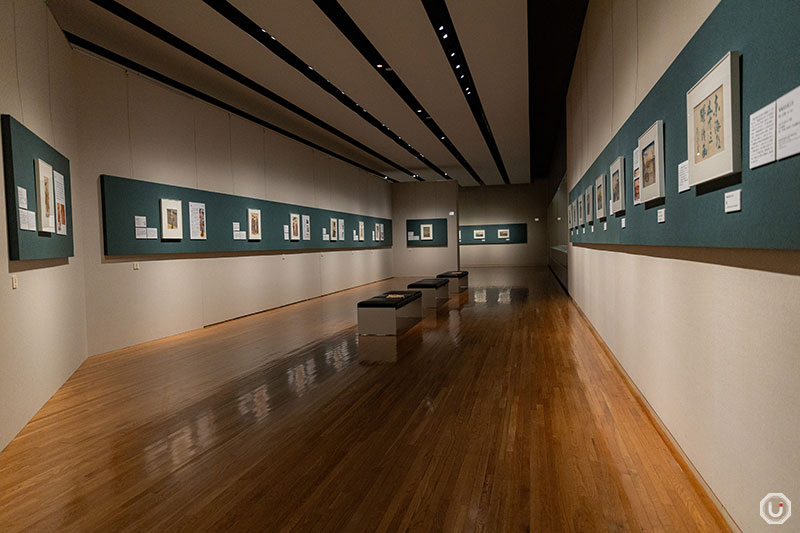
This exhibition is notable for being one of the rare occasions where the Yamatane Museum of Art, specializing in Japanese painting, has taken a large-scale focus on ukiyo-e.
Works by the six great Edo-period artists—Suzuki Harunobu, Torii Kiyonaga, Kitagawa Utamaro, Tōshūsai Sharaku, Katsushika Hokusai, and Utagawa Hiroshige—are all featured together.
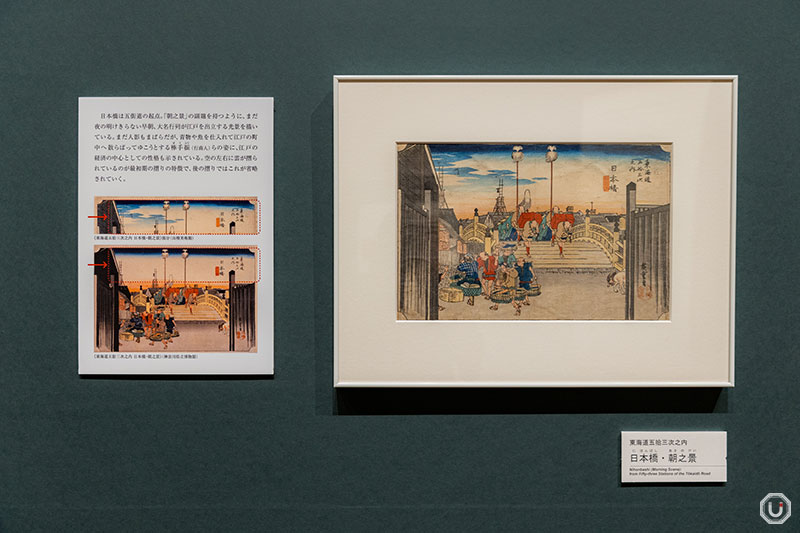
Explanatory notes are displayed alongside the artwork; “Utagawa Hiroshige, Fifty-three Stations of the Tokaido Road: Nihonbashi (Moning Scene)”; Yamatane Museum of Art
Particularly noteworthy is Utagawa Hiroshige’s “Fifty-three Stations of the Tōkaidō Road: Nihonbashi (Morning Scene).”
In addition to the skillful composition and beautiful colors, the artwork includes detailed explanations so that even beginners can enjoy it. Although it was only available until September 28, 2025, it was an ideal exhibition for taking the first step into Japanese art.
From October 4 to November 30, 2025, the special exhibition “A Nihonga Pilgrimage 2025 -From Hayami Gyoshū and Higashiyama Kaii to Yamaguchi Akira-” is scheduled to be held, which is highly anticipated as well.
Enhance your experience with multilingual support comments
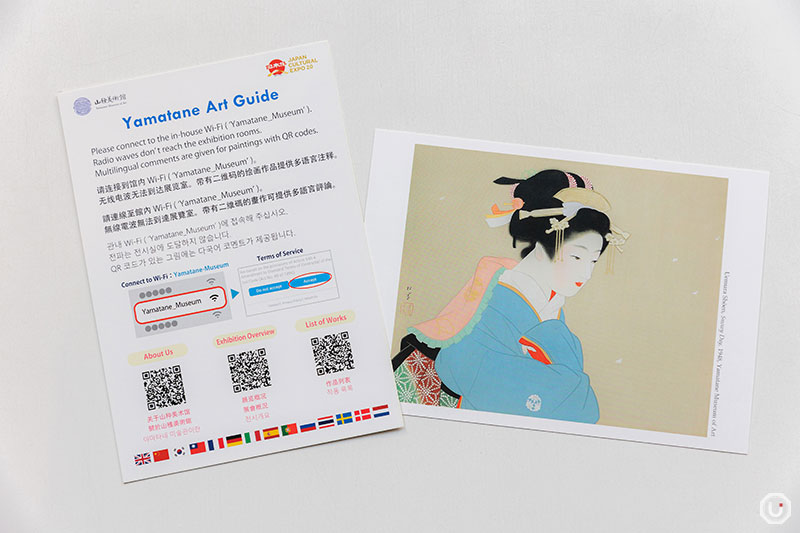
Yamatane Art Guide card
At the Yamatane Museum of Art, supporting multilingual comments called the “Yamatane Art Guide” are available to deepen visitors’ understanding of the artworks.
Visitors receive a dedicated card at the reception and, in the underground exhibition rooms, connect to the Free Wi-Fi and scan the QR codes placed below the artworks.
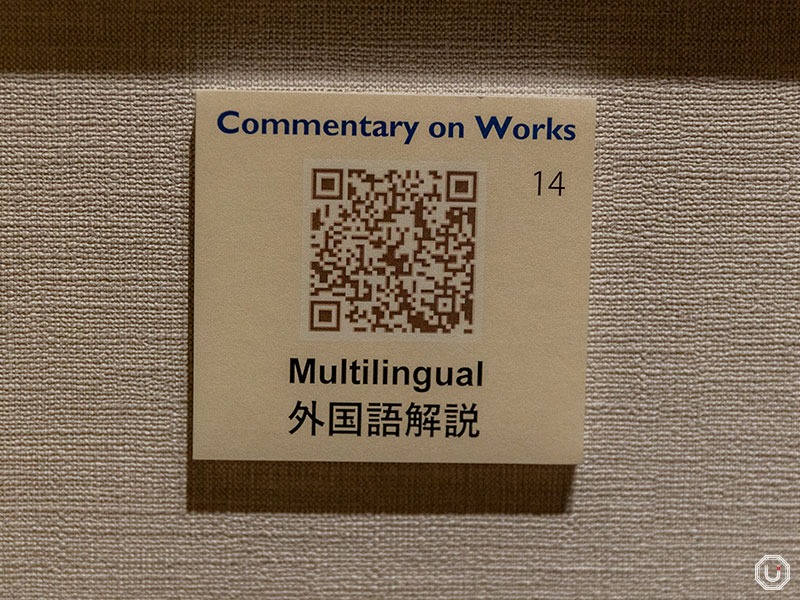
QR codes placed beneath the artwork
The multilingual comments are available in English, Chinese, Korean, and 10 other languages. They can be easily used by anyone with a smartphone.
Additionally, English pamphlets are provided, and there is a corner introducing sightseeing information in multiple languages, ensuring a visitor-friendly experience for those coming from overseas.
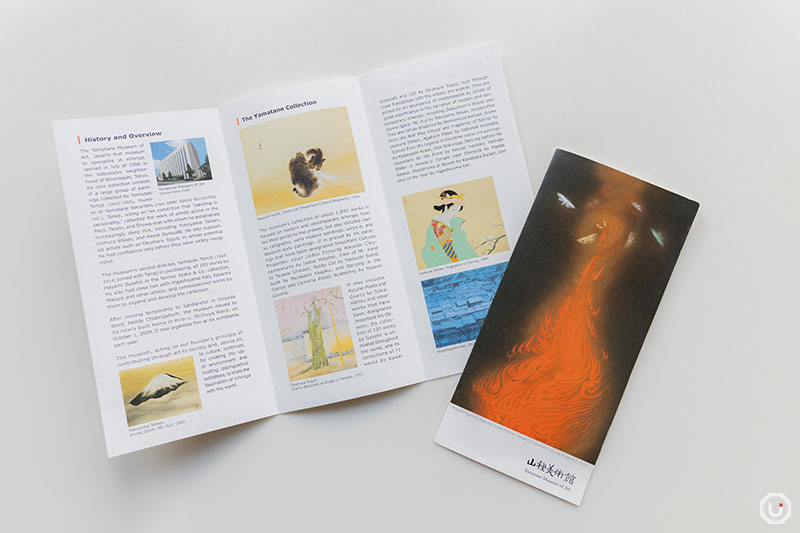
Discover Japanese traditional art and playful merchandise at the Museum Shop
The museum shop, located next to the exhibition rooms, offers a variety of original items that showcase the unique style of the Yamatane Museum of Art.
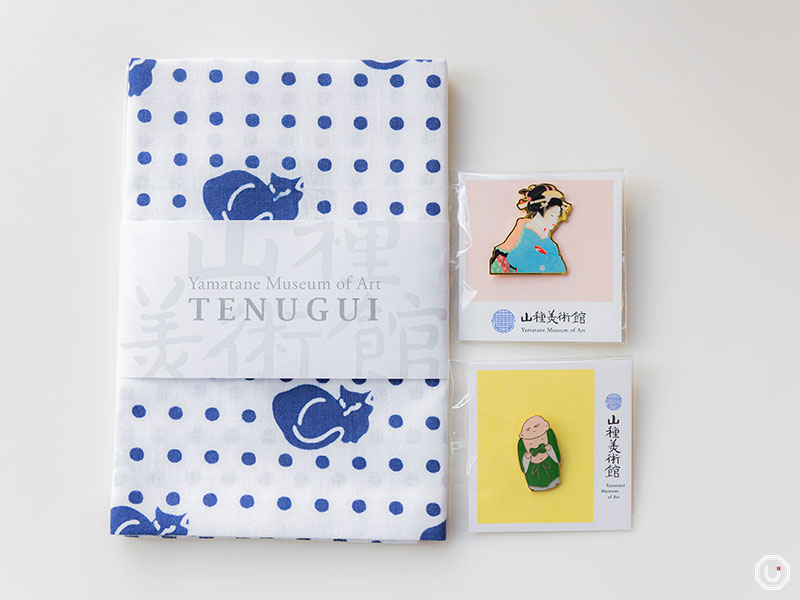
(Left) “山種美術館 オリジナル 手ぬぐい 速水御舟 ‘翠苔緑芝’,” Yamatane Museum of Art Original Tenugui: Hayami Gyoshū “Emerald Mosses and Verdant Turf” 1,400 JPY (tax included) (Right) “ピンバッジ,” Pinbadges starting from 900 JPY a piece (tax included)
Alongside the classic postcards and clear files, popular items include tenugui towels that evoke traditional Japanese culture and playful pinbadges. As pictured above, (top right), the pinbadges include works of art like “Snow Day” by Uemura Shōen, and “Fushimi Dolls” by Itō Jakuchū.
Among the many goods, one of the most highly praised is a mini folding screen inspired by Hayami Gyosh’s art designated as a Japanese important Cultural Property “Camellia Petals Scattering.” It’s a charming way to take a piece of the museum experience home with you.
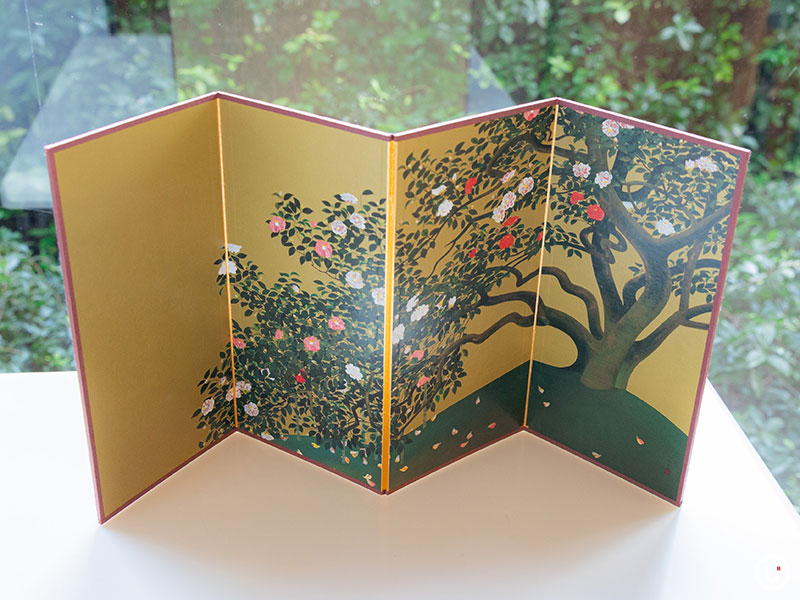
“山種美術館ミニ屏風 速水御舟 ‘名樹散椿’,” Mini folding screen: Hayami Gyoshū “Camellia Petals Scattering” 5500 JPY (tax included)
Cafe Tsubaki: experience traditional Japanese art though sweets
Cafe Tsubaki, on the first floor, offers original Japanese sweets inspired by exhibitions, crafted by the renowned confectionery Kikuya in Aoyama. Motifs are drawn from flowers, fruits, and landscapes depicted in the artworks.
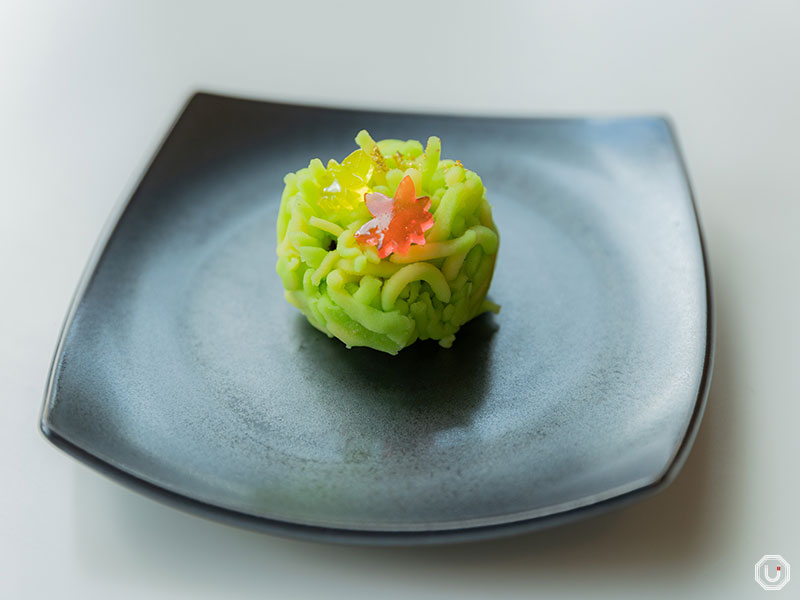
“秋げしき,” Aki-Geshiki
“Aki-Geshiki,” which conveys the art of Tawaraya Sōtatsu’s “Chinese Black Pines and Maple Trees,” features green kinton sweets representing the leaves of the pine tree and Kingyokukān (Japanese jelly) representing the maple leaves.
Meanwhile, “Tsukiyo-no-Umi,” inspired by Utagawa Hiroshige’s “Night View of Eight Scenic Spots at Kanazawa: Moon, from Snow, Moon, and Flower,” beautifully depicts the night sea illuminated by moonlight using Kingyokukan.
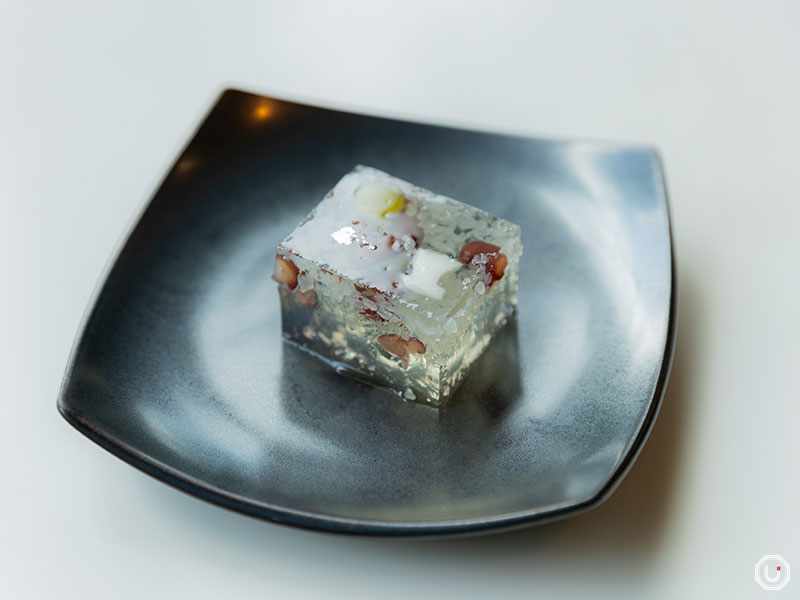
“月夜の海,” Tsukiyo-no-Umi
Of course, the sweets pair perfectly with matcha, but they also go well with sencha (green tea) or coffee. Many visitors return repeatedly, seeking a quiet moment to savor the lingering impression of both art and traditional Japanese confections.
With its rich collection and thoughtfully curated exhibitions, the Yamatane Museum of Art is not just a place to view works—it offers visitors time to truly engage with the art.
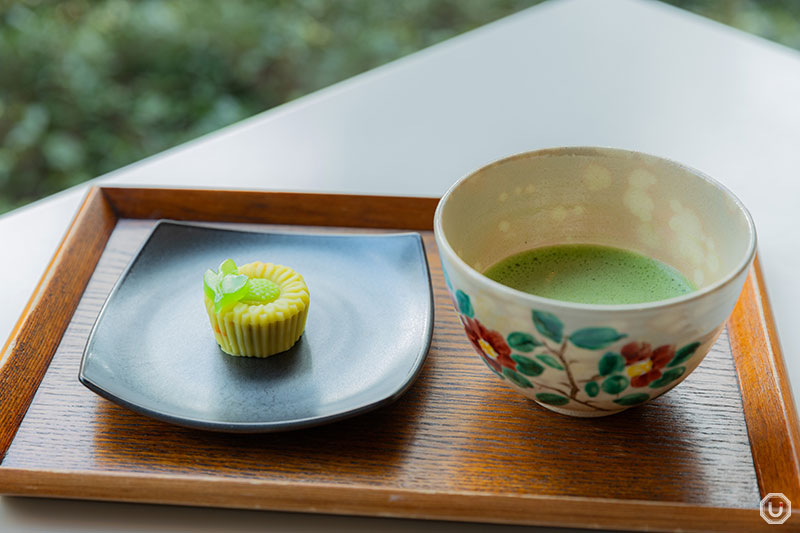
“お抹茶セット(和菓子:『夏の日』),” Matcha Wagashi Set (with Natsu-no-Hi wagashi) 1,500 JPY (tax included))
Japanese audio guides, multilingual services, the museum shop, and café menus that let you taste the seasons through traditional Japanese sweets—these thoughtful touches are sprinkled throughout the museum to enrich the visitor experience.
In the quiet, you can face a single work of art and absorb the time and emotions embedded in it. There are very few places in Tokyo where you can truly feel this way.
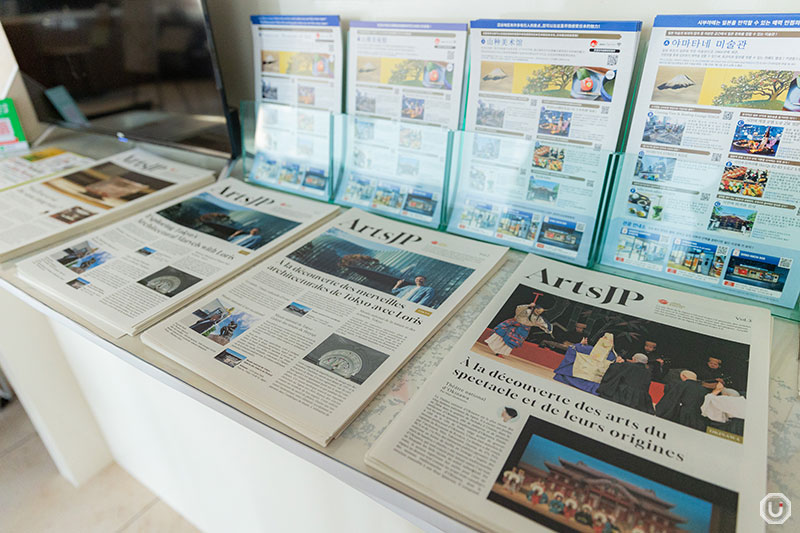
Information sheet about Japanese art
In the entrance hall, there is a corner introducing nearby tourist spots in multiple languages, along with guide maps in English, Chinese (Traditional and Simplified) and Korean.
They also provide information papers about Japanese art, making it ideal for sightseeing after your visit.
For those seeking a rich, fulfilling experience right in the heart of Tokyo, Yamatane Museum of Art keeps its doors open to you.
Information
| Facility name | 山種美術館 Yamatane Museum of Art |
|---|---|
| Address | 3-12-36 Hiroo, Shibuya-ku, Tokyo
|
| Access |
Ebisu Station(EBS) Appr. 10-minute walk from Ebisu West Exit
Ebisu Station(EBS) Appr. 10-minute walk from Exit 1
|
| Phone number | 050-5541-8600(”Hello Dial” general information) |
| Hours | 10:00-17:00(last entry is 30 minutes before closing) |
| Closed | Monday (or Tuesday if Monday is a national holiday) |
| Admission | Adult / Student (high school and university) admission varies by exhibition Middle school and younger children: free of charge *Discount for those who are wearing kimono: 200 JPY off for adults, 100 JPY off for university and high school students |
| Official website | https://www.yamatane-museum.jp/english/ |
| Pamphlets | Available with Japanese and English language |
| Exhibit audio guides | Available with Japanese language |
※All museum information in this article is accurate as of September 2025.
